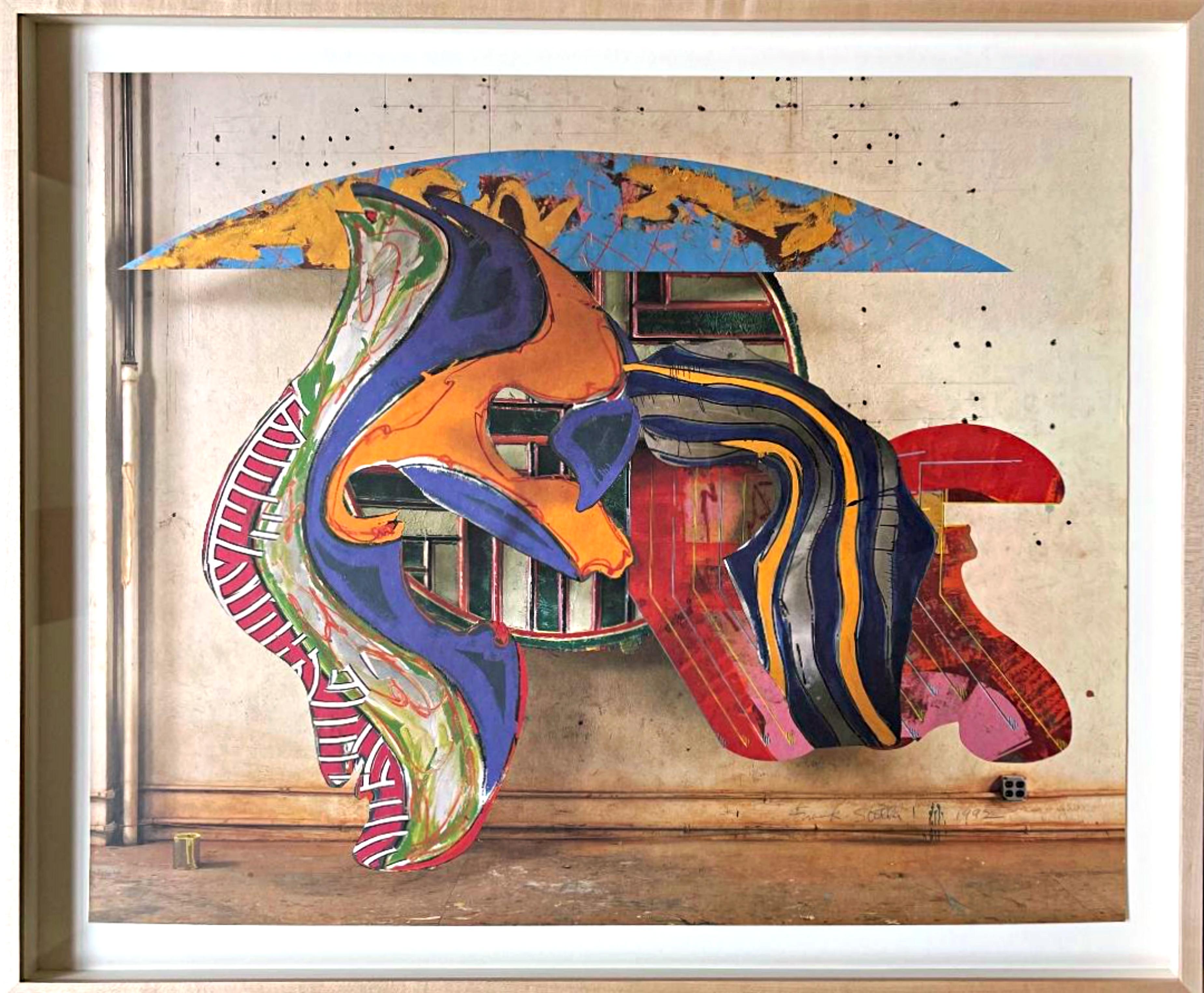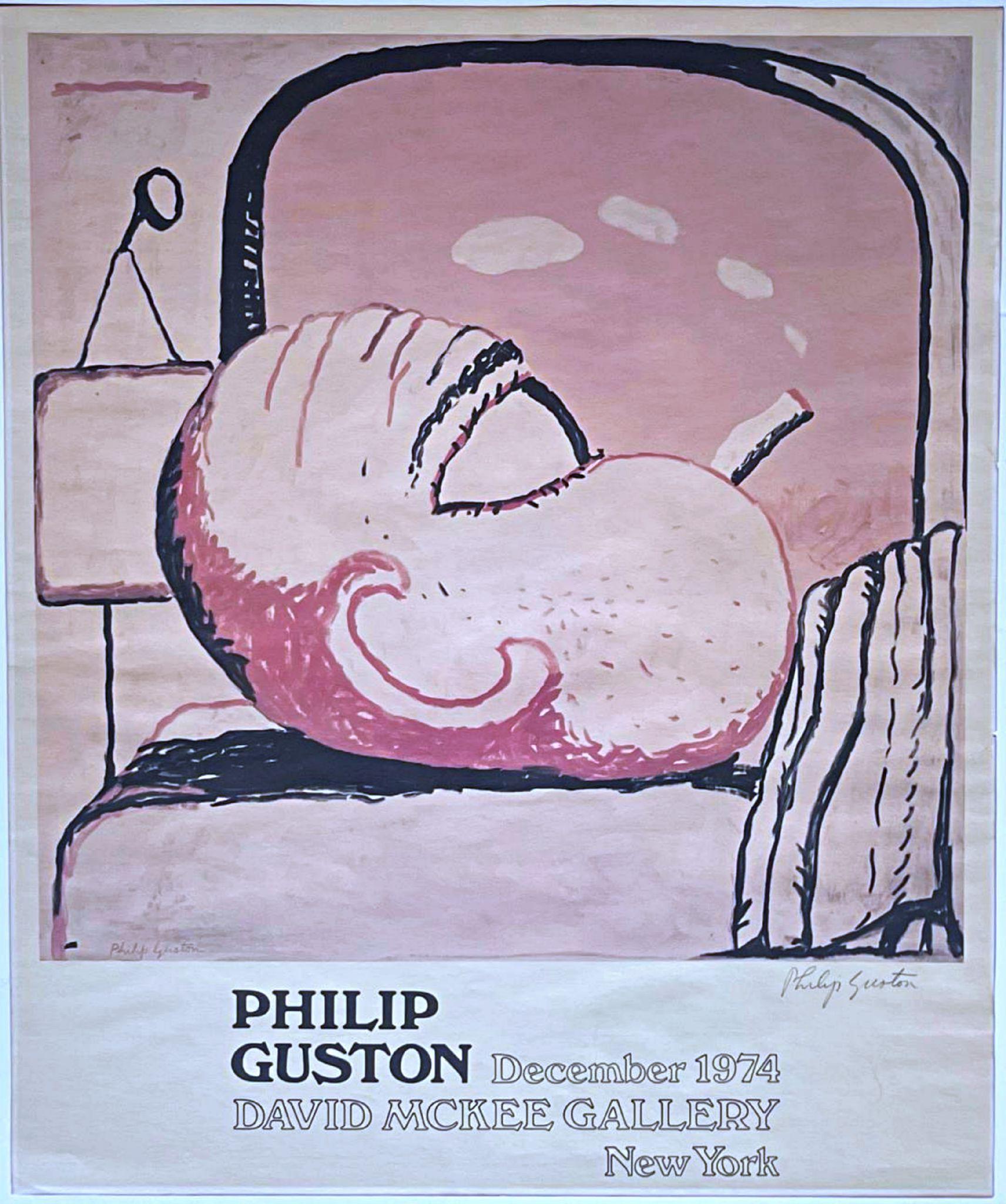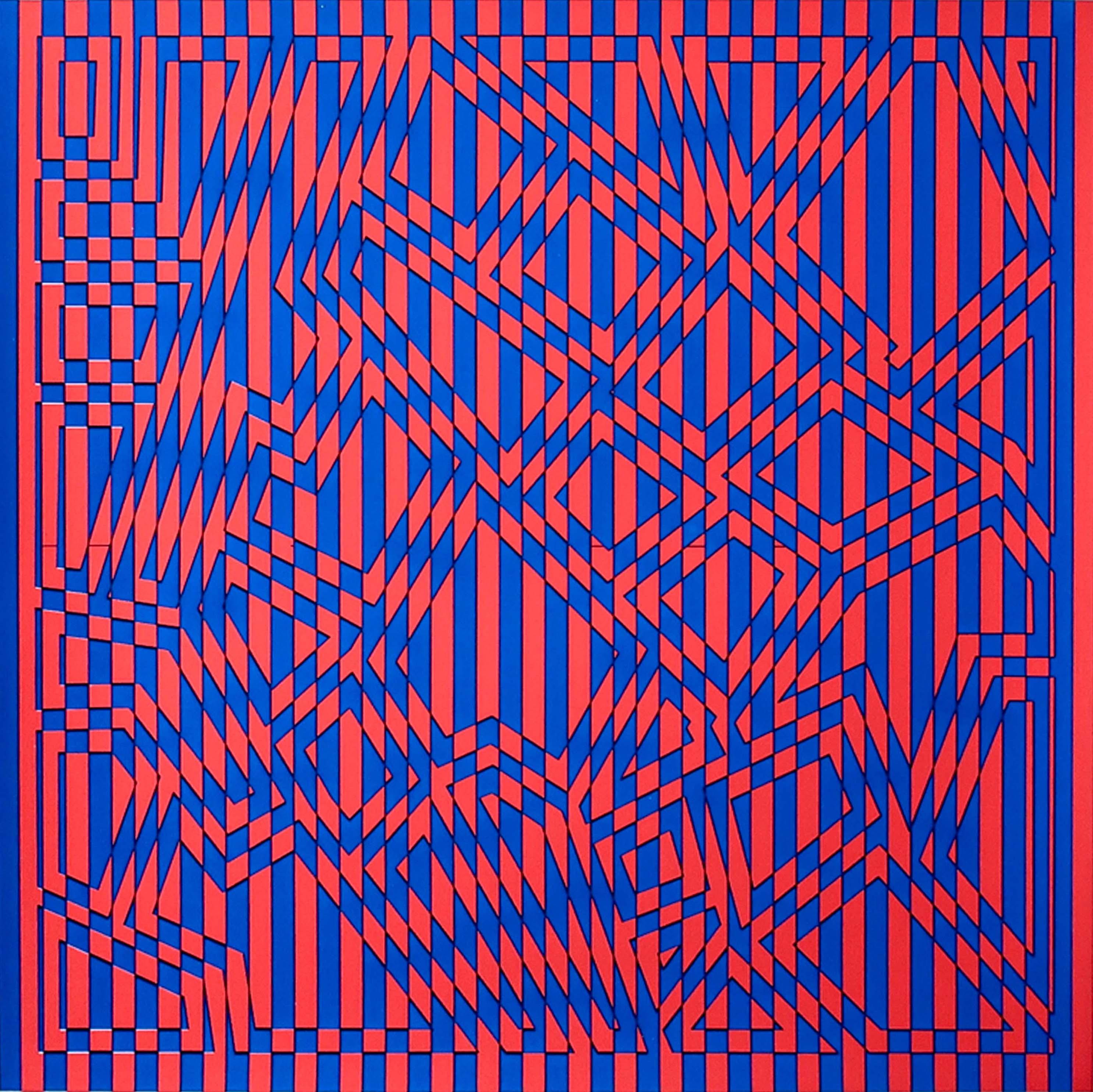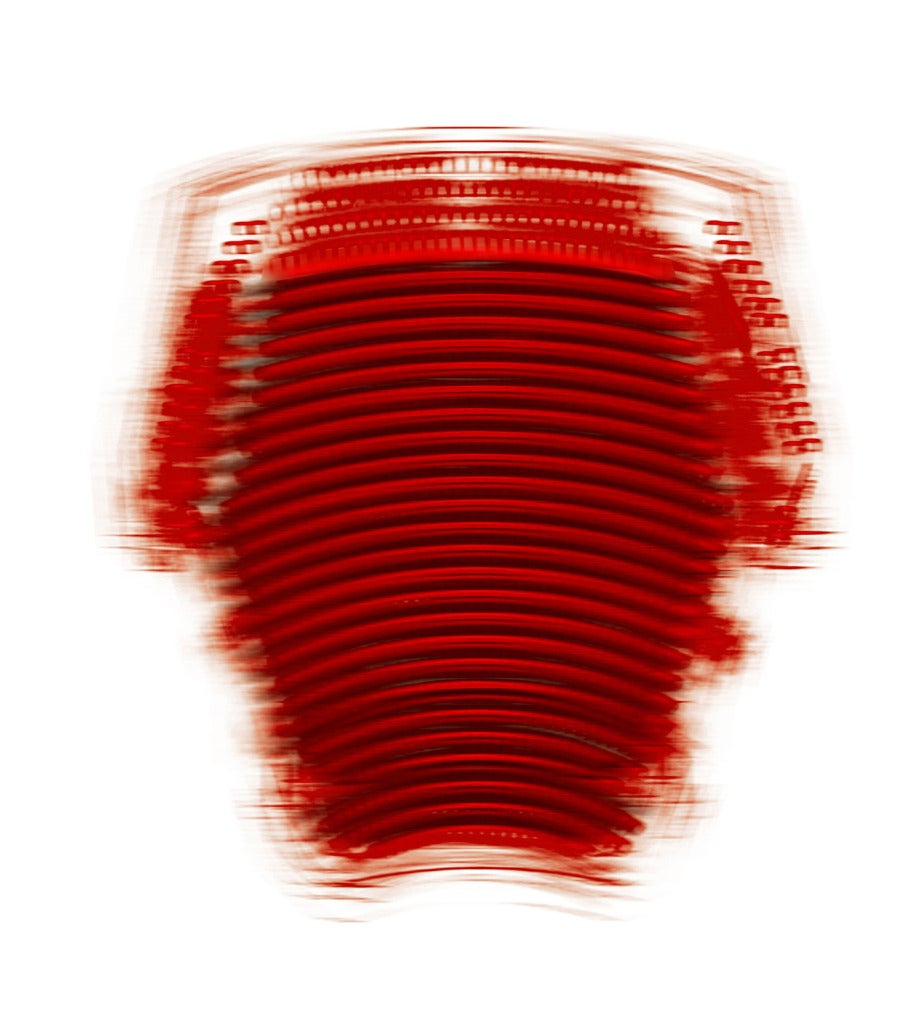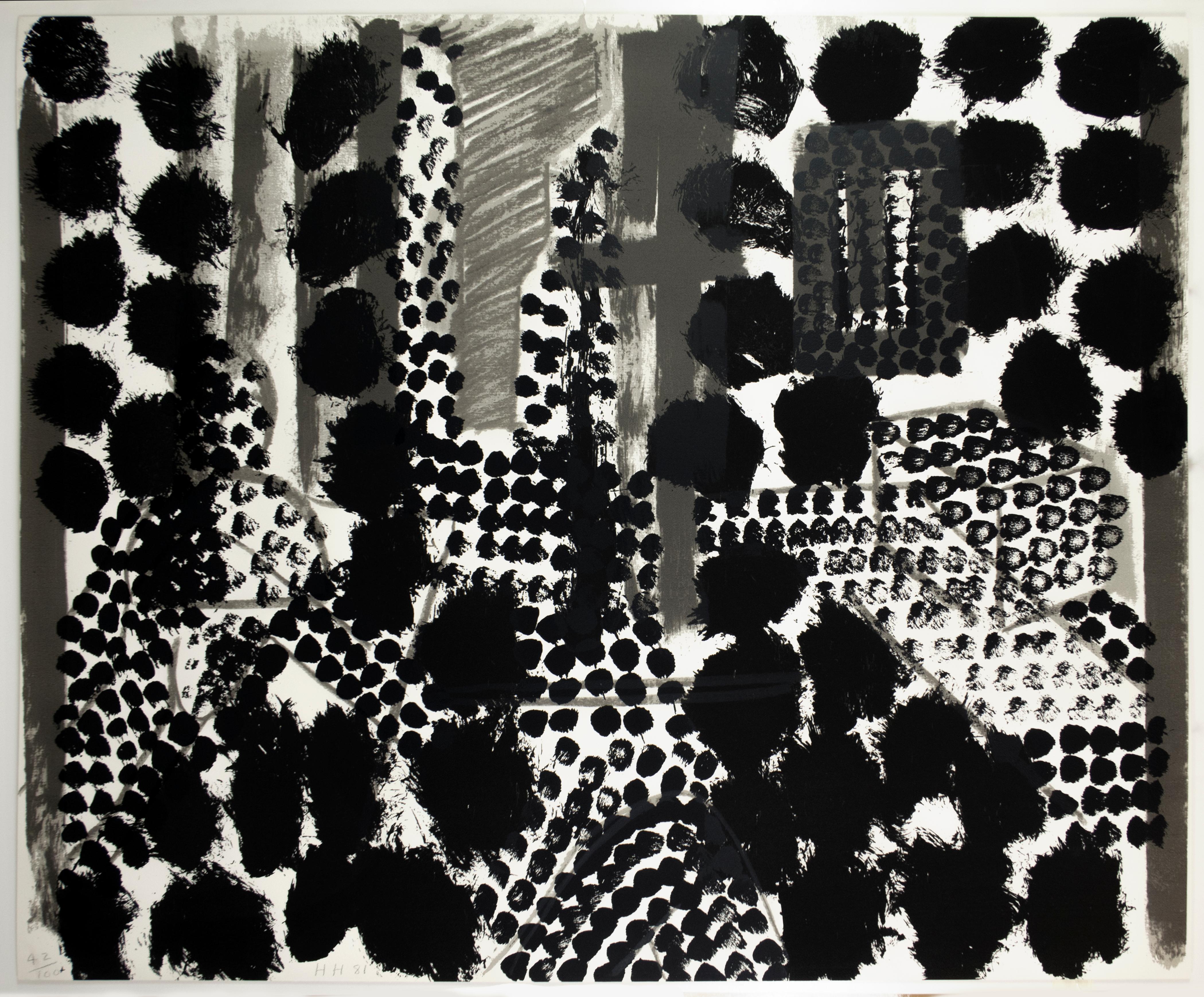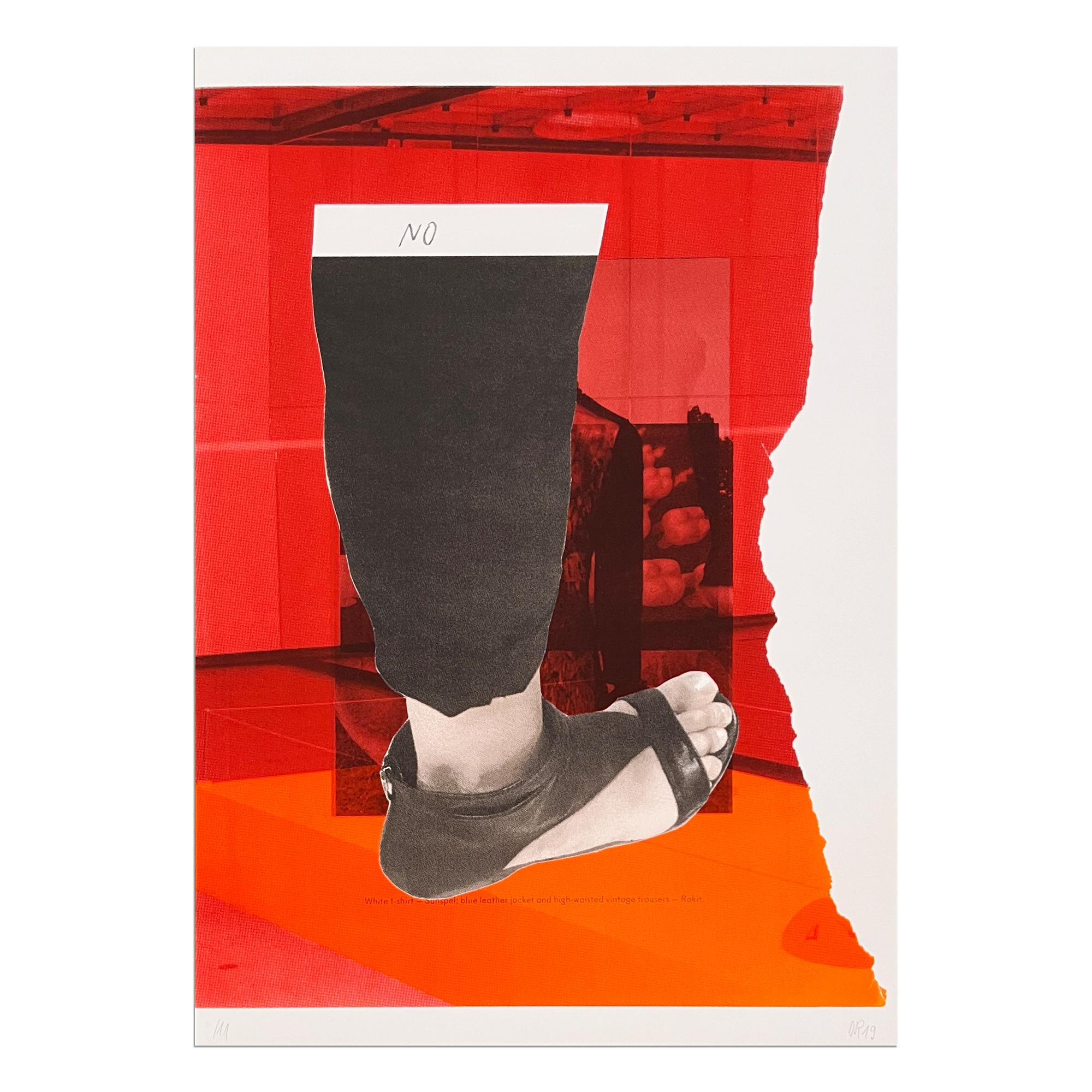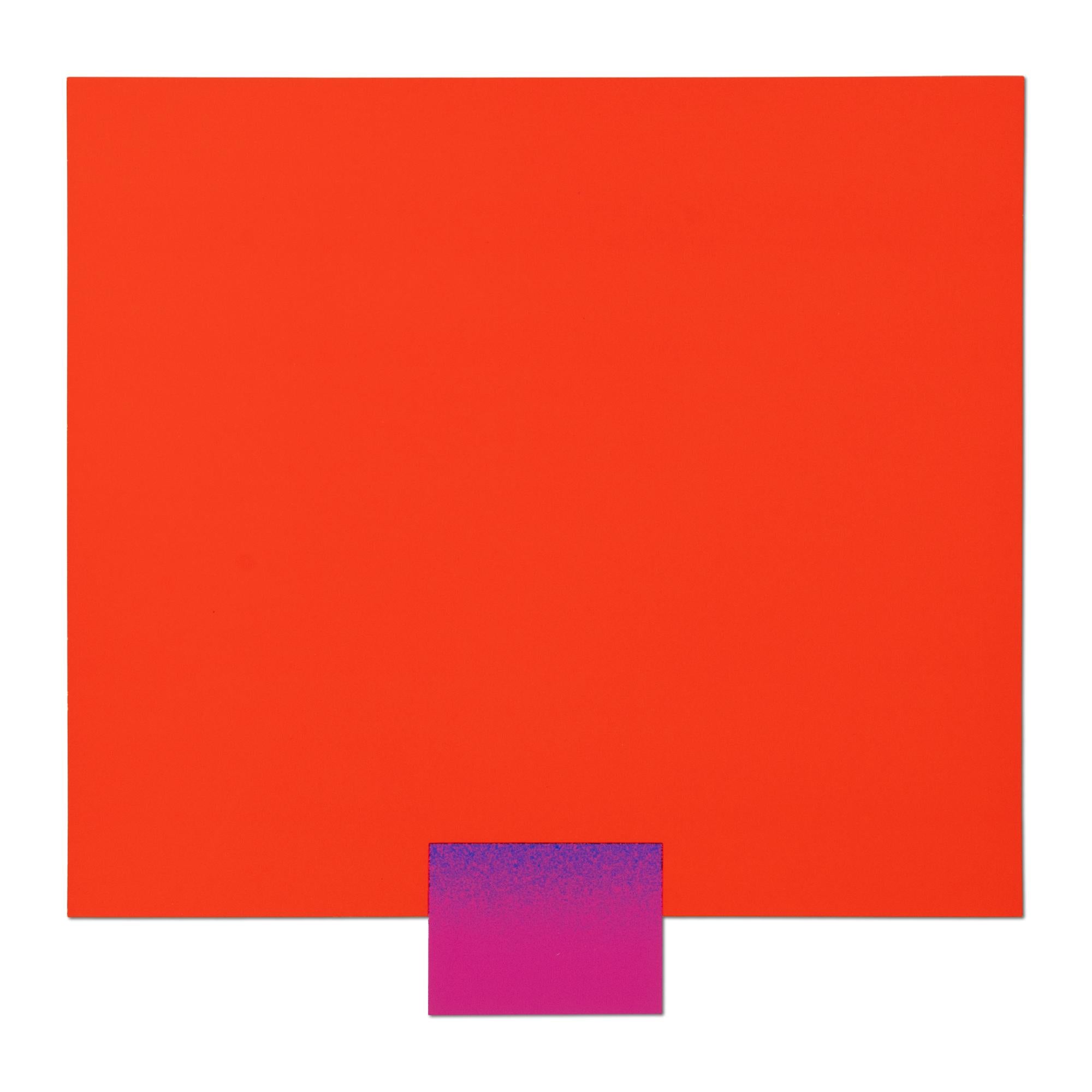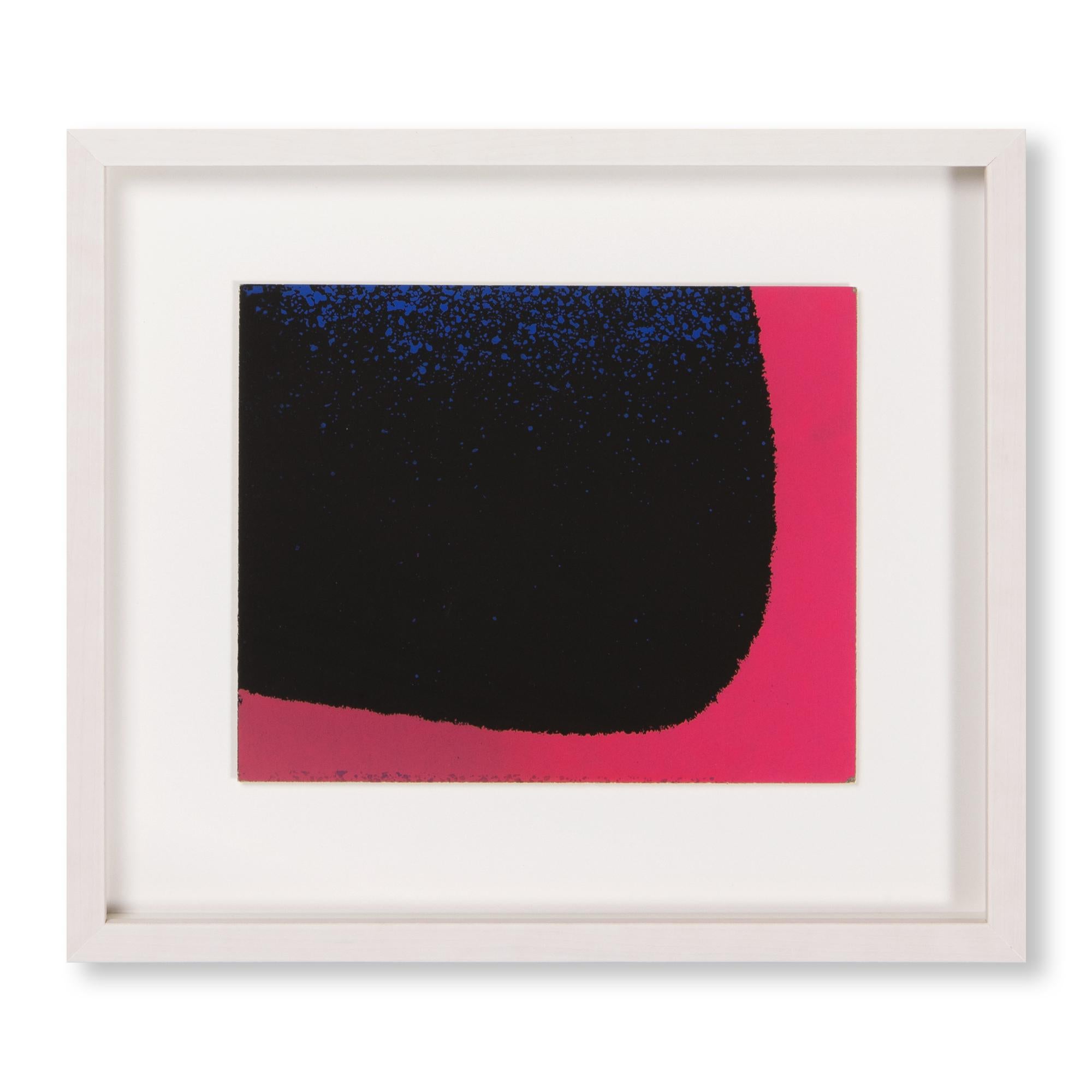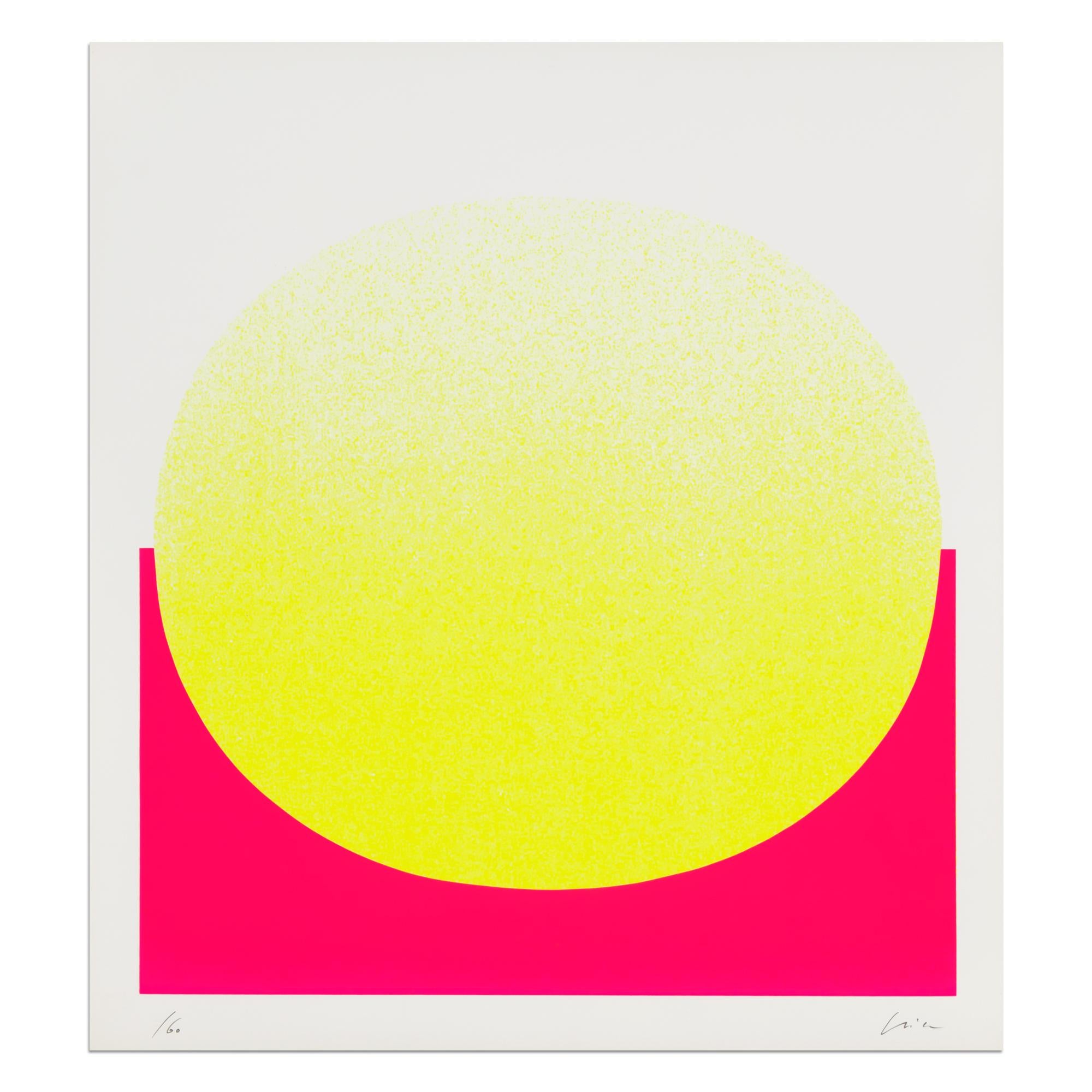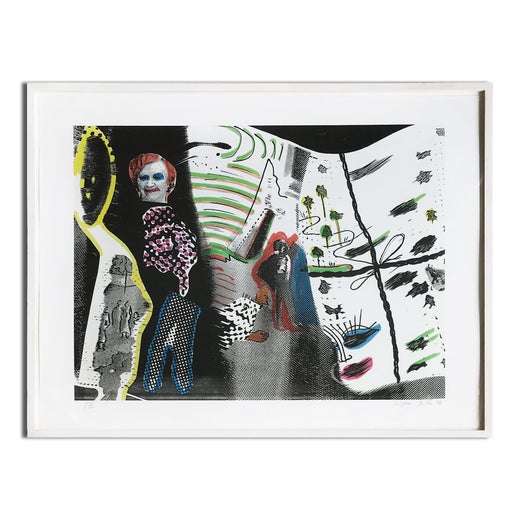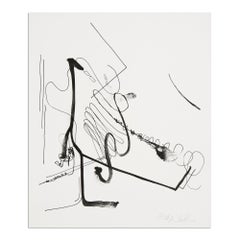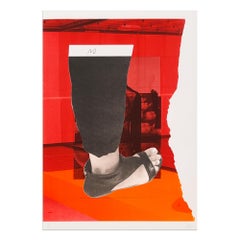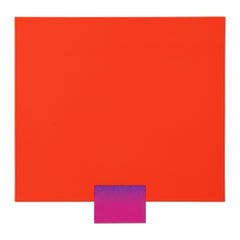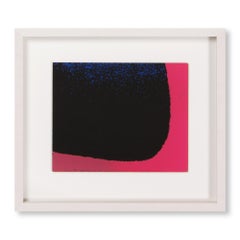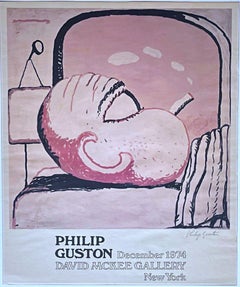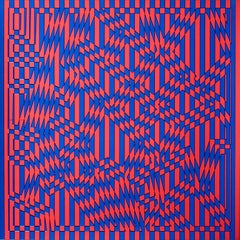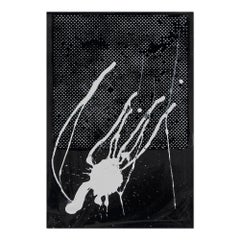
Sigmar Polke, Untitled (Griffelkunst 1989) - Signed Print, Abstract Art, Pop Art
View Similar Items
Want more images or videos?
Request additional images or videos from the seller
1 of 6
Sigmar PolkeSigmar Polke, Untitled (Griffelkunst 1989) - Signed Print, Abstract Art, Pop Art1989
1989
$4,019.41List Price
About the Item
- Creator:Sigmar Polke (1941 - 2010, German)
- Creation Year:1989
- Dimensions:Height: 38.59 in (98 cm)Width: 26.38 in (67 cm)
- Medium:
- Movement & Style:
- Period:
- Condition:
- Gallery Location:Hamburg, DE
- Reference Number:1stDibs: LU704313202262
Sigmar Polke
Sigmar Polke was an influential German artist whose inventive paintings and photographs used non-traditional materials, such as meteorite dust or detergent. The artist once stated,“There has to be an element in of risk-taking for me in my work.” His wry probing of aesthetic taste is evident in his work “Alice im Wunderland (Alice in Wonderland)” (1972), a painting layered with irony, psychological states, and fiction. Born on February 13, 1941, in Oels, Polke and his family were expelled to East Germany after the World War II. Growing up in the German Democratic Republic left a lasting impact on the artist, especially the sensorial overload of consumer culture he experienced upon moving to West Germany in 1953. While studying at the Kunstakademie Düsseldorf, Polke, Gerhard Richter, and Konrad Lueg created what is now known as capitalist realism. Together, these artists responded to the nationalistic themes of socialist realism, while also critiquing West Germany’s burgeoning consumer society. Polke’s work went on to have a profound impact on a generation of young American artists, including Julian Schnabel and David Salle. Polke died on June 10, 2010, in Cologne, Germany, at the age of 69. Today, his works are included in the collections of the Art Institute of Chicago, The Museum of Modern Art in New York, the Tate Gallery in London, the Kunstmuseum Bonn in Germany, and the J. Paul Getty Museum in Los Angeles, among others.
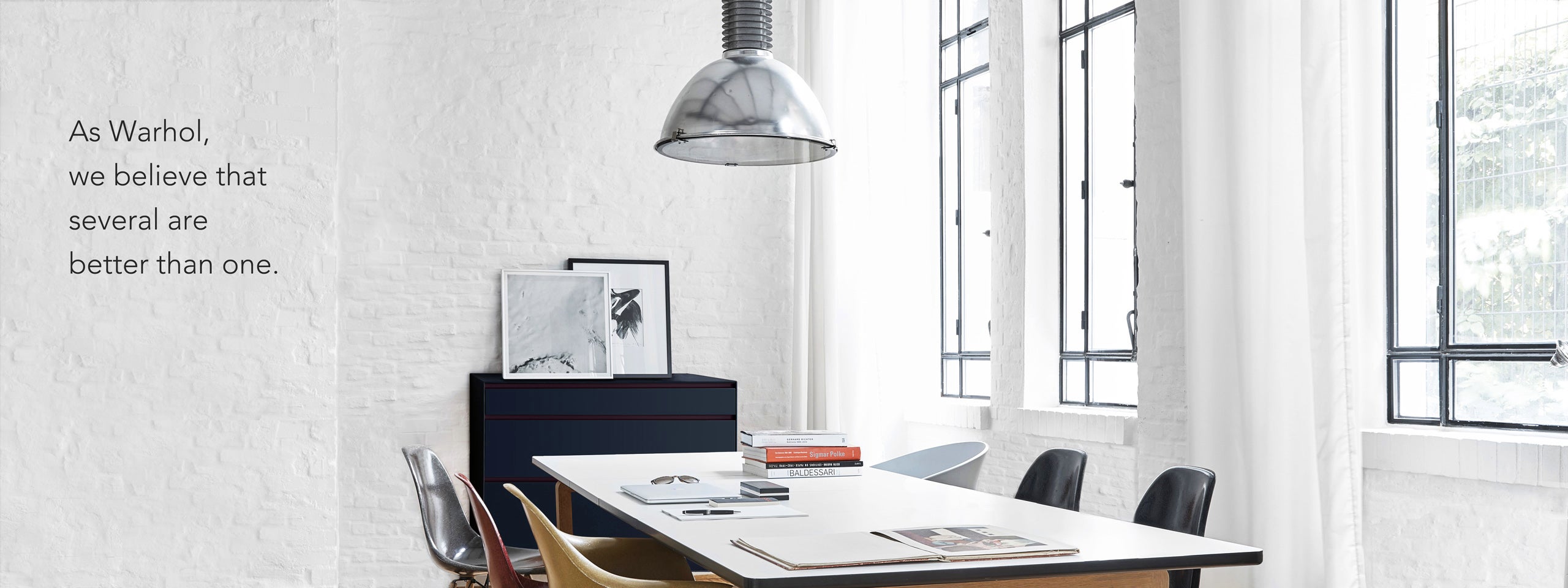
About the Seller
4.9
Gold Seller
Premium sellers maintaining a 4.3+ rating and 24-hour response times
Established in 2017
1stDibs seller since 2017
180 sales on 1stDibs
Typical response time: 11 hours
Authenticity Guarantee
In the unlikely event there’s an issue with an item’s authenticity, contact us within 1 year for a full refund. DetailsMoney-Back Guarantee
If your item is not as described, is damaged in transit, or does not arrive, contact us within 7 days for a full refund. Details24-Hour Cancellation
You have a 24-hour grace period in which to reconsider your purchase, with no questions asked.Vetted Professional Sellers
Our world-class sellers must adhere to strict standards for service and quality, maintaining the integrity of our listings.Price-Match Guarantee
If you find that a seller listed the same item for a lower price elsewhere, we’ll match it.Trusted Global Delivery
Our best-in-class carrier network provides specialized shipping options worldwide, including custom delivery.More From This Seller
View AllAlbert Oehlen, Meditation über Bürokratische Tendenzen bei TzK, Signed Print
By Albert Oehlen
Located in Hamburg, DE
Albert Oehlen (German, b. 1954)
Meditation über Bürokratische Tendenzen bei TzK, 2020
Medium: Lithograph on paper
Dimensions: 36.2 × 30.6 cm (14 3/10 × 12 in)
Edition of 100: Hand-si...
Category
21st Century and Contemporary Abstract Expressionist Abstract Prints
Materials
Lithograph
Daniel Richter, Untitled - Signed Screenprint, Collage, Contemporary Art
By Daniel Richter
Located in Hamburg, DE
Daniel Richter (German, born 1962)
Untitled (from 11 Screenprints), 2019
Medium: Screenprint on paper
Dimensions: 59.4 x 42 cm
Edition of 11: Hand-signed and numbered
Condition: Exce...
Category
21st Century and Contemporary Abstract Abstract Prints
Materials
Screen
Rupprecht Geiger, Violet on Warm Red - Abstract Art, Signed Screen Print
By Rupprecht Geiger
Located in Hamburg, DE
Rupprecht Geiger (German, 1908-2009)
Violet on Warm Red (from Hundertbuch III), 1981
Medium: Screenprint on cardboard
Sheet dimensions: 39.5 x 40 cm
Edition of 100 + XX: Hand-signed ...
Category
20th Century Abstract Abstract Prints
Materials
Screen
Rupprecht Geiger, Blue-Black and Bluish Red - Abstract Art, Signed Print
By Rupprecht Geiger
Located in Hamburg, DE
Rupprecht Geiger (German, 1908 – 2009)
Blue-Black and Bluish Red, 1961
Medium: Screenprint on cardboard
Dimensions: 16.7 x 20.6 cm
Framed dimensions: 31.4 x 27.5 x 2.9 cm
Edition of ...
Category
20th Century Abstract Abstract Prints
Materials
Screen
Rupprecht Geiger, Yellow on Red - Signed Print, Abstract Art, Hard Edge
By Rupprecht Geiger
Located in Hamburg, DE
Rupprecht Geiger (German, 1908-2009)
Yellow on Red, 1969
Medium: Screenprint on card stock
Dimensions: 39 x 35 cm
Edition of 60: Hand-signed and numbered
Publisher: Edition Fürneisen...
Category
20th Century Abstract Abstract Prints
Materials
Screen
François Morellet, Trames: Portfolio of 8 Signed Screenprints, Abstract Art
By Francois Morellet
Located in Hamburg, DE
François Morellet (French, 1926-2016)
Trames Portfolio, 1965
Medium: 8 screenprints on cardboard
Dimensions: 62 × 62 cm (24 2/5 × 24 2/5 in)
Edition of 125: Each serigraph hand signe...
Category
20th Century Abstract Geometric Abstract Prints
Materials
Screen
You May Also Like
Chris Keegan, Boom, Bright Abstract Art, Portrait Art, Long Art, Affordable Art
By Chris Keegan
Located in Deddington, GB
Chris Keegan
Boom
Limited Edition Silkscreen Print
Edition of 50
Sheet Size: H 56cm x W 40cm x D 0.1cm
Sold Unframed
Please note that in situ images are purely an indication of how a...
Category
21st Century and Contemporary Abstract Expressionist Abstract Prints
Materials
Paper, Screen
Very Special Arts Gallery photolithograph (Hand Signed by Frank Stella) Framed
By Frank Stella
Located in New York, NY
Frank Stella (after)
Untitled, for the Very Special Arts Gallery (Hand Signed by Frank Stella), 1992
Photo lithograph and offset litho on thin board (hand signed)
Frame included:: el...
Category
1990s Abstract Expressionist Abstract Prints
Materials
Lithograph, Offset
Rare 1970s offset lithograph exhibition poster (pencil signed by Philip Guston)
By Philip Guston
Located in New York, NY
Philip Guston at David McKee Gallery (pencil signed by Philip Guston), 1974
Lithograph and offset lithograph poster
Signed in graphite pencil under the image
24 1/2 × 20 inches
Unframed, unnumbered
Rare vintage lithographic poster of 1974 Guston exhibition at David McKee Gallery
Signed under the image in graphite pencil by Philip Guston
Another hand signed edition is in the permanent collection of Vassar College; otherwise we haven't seen another besides the present work; a true collectors item when hand signed by the artist.
Philip Guston Biography
Philip Guston (1913 – 1980) is one of the great luminaries of twentieth-century art. His commitment to producing work from genuine emotion and lived experience ensures its enduring impact. Guston’s legendary career spanned a half century, from 1930 to 1980. His paintings—particularly the liberated and instinctual forms of his late work—continue to exert a powerful influence on younger generations of contemporary painters. Born in Montreal, Canada, in 1913 to poor Russian Jewish émigrés, Guston moved with his family to California in 1919. Briefly attending the Otis Art Institute in Los Angeles in 1930, he was otherwise completely self-taught.
Guston’s first precocious work, Mother and Child, was completed when he was only seventeen years of age. Influenced by the social and political landscape of the 1930s, his earliest works evoked the stylized forms of Giorgio de Chirico and Pablo Picasso, social realist motifs of the Mexican muralists, and classical properties of Italian Renaissance frescoes of Piero della Francesca and Masaccio that he had seen only in reproduction. Painted in Mexico with another young artist, the huge fresco The Struggle Against War and Fascism drew national attention in the US. Guston’s success continued in the WPA, a Depression-era government program that commissioned American artists to create murals in public buildings. While not widely known today, the young artist’s early experiences as a mural painter allowed a development of narrative and scale that he would draw upon in his late figurative work. In the early 1940s, as the WPA program was ending, Guston found work teaching at universities in the Midwestern United States. In his studio, he was working in oils on easel paintings that were more personal and smaller in scale, focusing on portraits and allegories, like Martial Memory and If This Be Not I. His first solo exhibition in Iowa was well received and, within a few years, he was offered his first solo show in New York City. Guston was awarded a Prix de Rome, allowing him to leave teaching and spend a year in Italy, studying firsthand the Italian masters he loved.
By the time he had finished The Tormentors, Guston’s move to abstraction was all but complete. On his return from Italy, he continued dividing his time between the artists’ colony of Woodstock in Upstate New York and New York City, which was then emerging as the center of the postwar art world. He rented a studio on 10th Street, where abstract expressionists Jackson Pollock, Willem de Kooning and Mark Rothko also worked. For Guston, success was never what mattered most. He was already impatient with the language of pure abstraction and experimenting with larger forms, using a limited palette of grays, pinks and blacks. As his forms became still more reduced, he stopped painting altogether and embarked on a series of simplified abstract “pure drawings” in brush or charcoal. At this juncture, Guston removed himself from the art scene in New York, living and working in Woodstock for the remainder of his life.
Guston’s move was hardly a withdrawal. Freed from the distractions and formal constraints of the art world and the opinions of critics, he was able to experiment with new forms and to engage more deeply with the issues that mattered to him.
The 1960s was a period of great social upheaval in the United States, characterized by assassinations and violence, civil rights and anti-war protests. “When the 1960s came along I was feeling split, schizophrenic,” Guston later said. “The war, what was happening to America, the brutality of the world. What kind of man am I, sitting at home, reading magazines...
Category
1970s Abstract Expressionist Abstract Prints
Materials
Lithograph, Offset
"KVTNO7_02" Abstract Print 23" x 23" Edition of 50 by DOT
Located in Culver City, CA
"KVTNO7_01" Abstract Print 23" x 23" Edition of 50 by DOT
Print. Signed and numbered by the artist.
ABOUT THE ARTIST:
By compiling concepts from multiple philosophies, DOT’s Art...
Category
21st Century and Contemporary Abstract Geometric Abstract Prints
Materials
Canvas, Screen
Alice Tully Hall, by Guillermo Kuitca (red abstract)
By Guillermo Kuitca
Located in New York, NY
One screen print on wove paper titled, Alice Tully Hall by Guillermo Kuitca, 2009. It is hand signed in pencil, dated and numbered from the edition of 117 (total edition includes 18 artist's proofs) The sheet size is 22 1/4 by 20 inches, with the blindstamp of the printer, Brand X Editions, New York. Published by Lincoln Center for the Performing Arts, Inc., New York.
This impression has a rich, bold red color on bright white paper.
Guillermo Kuitca, whose paintings and prints are often inspired by seating arrangements in theater interiors, recreates the seating chart...
Category
Early 2000s Abstract Abstract Prints
Materials
Screen
Souvenir, Howard Hodgkin: large scale black white gray abstract interior scene
By Howard Hodgkin
Located in New York, NY
Very large scale black and white abstract interior scene with dots, lines, brushstrokes, paint daubs, fingerprints, squares and rectangles. Striking print to hang in contemporary, modern and minimalist spaces. While British pop artists such as David Hockney and Patrick Caulfield numbered amongst Howard Hodgkin's circle of friends, Hodgkin's work is more painterly, expressionist, and abstract.
Paper 45 x 55 in. / 114.3 x 139.7 cm.
Souvenir by Howard Hodgkin. Screenprint on Arches aquarelle mould-made paper. Signed by the artist with initials and dated 80 in pencil lower center, numbered in pencil lower left.
This bold Howard Hodgkin print layers five shades of black, with a wide variety of marks including some from the artist’s fingerprints and hand. Scribbles and lines of grey loosely define what could be an interior space with furniture. As is typical of his prints, there is a sense of space, and of the passage of time, expressed through shapes that seem to recede through the picture, deep black shades and, unusually for Hodgkin’s work, the white of the paper showing through. The last photograph displays these rich surface textures on the sheet at an angle.
Catalogue reference: Elizabeth Knowles...
Category
Late 20th Century Abstract Abstract Prints
Materials
Screen
Recently Viewed
View AllMore Ways To Browse
Robert Bauer
Mel Roberts
Robert Indiana Signed Hope
Spoleto Festival
Joan Miro Pochoir
Richard Diebenkorn Lithographs
Sonia Delaunay Paper Original
Gallery Vermillion
Howard Hodgkin Etching
Joe Jones
Paul Klee Poster
Salvador Dali Venice
Victor Vega
Adobe House
Albers Poster
Jesus Perea
Le Corbusier Black Prints
Robert Rauschenberg Signed Poster
